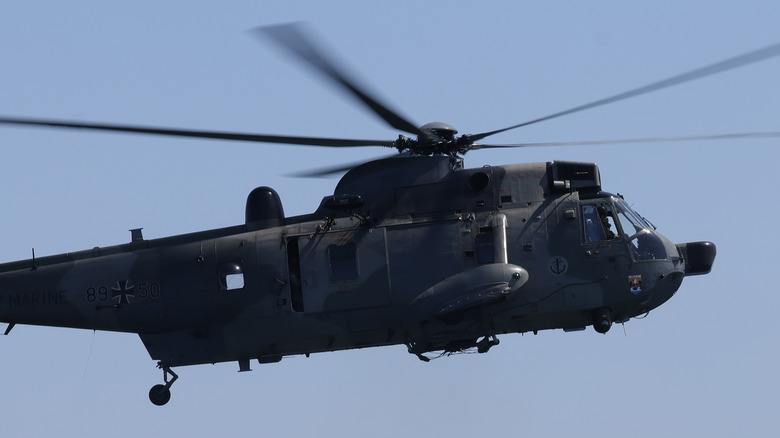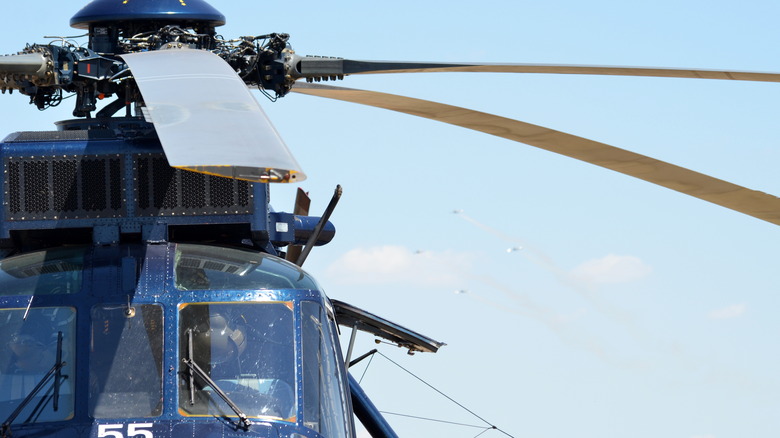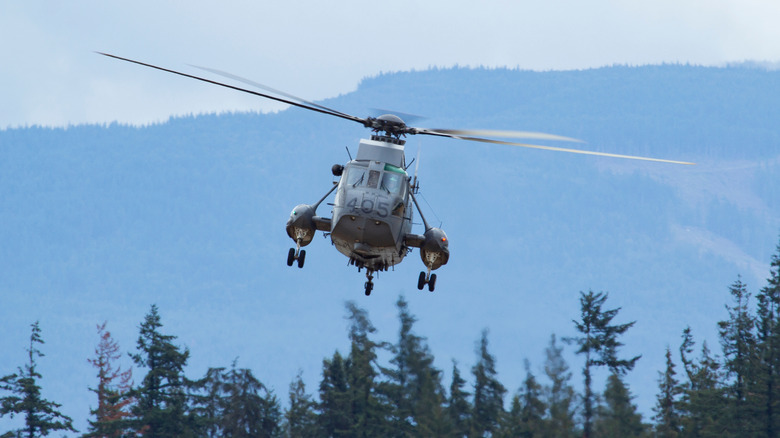How Do Helicopters Really Land On Carriers With Rough Ocean?
To fly a helicopter is an even more intensive process than flying an airplane, in terms of the mechanics involved. Flight Safety Australia notes that Harry Reasoner once wrote in a piece for Approach magazine, "In general, airplane pilots are open, clear-eyed, buoyant extroverts and helicopter pilots are brooders, introspective anticipators of trouble. They know if anything bad has not happened, it is about to.'" Helicopters, by design, can land almost anywhere there's room for them to safely do so. But it isn't just a simple matter of gradually slowing down and plopping gently onto terra firma, however.
Pilots sometimes, as Reasoner's quips suggest, face difficult landings with little room to maneuver, such as on carriers in choppy oceans. These are the feats that require a bit more than operating finesse and experience alone, however able a pilot may be.
How do teams safely approach such a task? A rather brilliant Canadian invention has made it far, far, safer to approach such a landing. Here's the story of the famous Beartrap and how it works.
What is the Beatrap?
While the name Beartrap may evoke rather violent imagery, it's a reference to the strong, potentially life-saving grip that the device can take on a helicopter in the process of landing.
The Helicopter Hauldown and Rapid Securing Device was first developed by Fairey Aviation Ltd and the Royal Canadian Navy in the 1950s and 60s. The goal was to find a way to make it easier for helicopters to accompany vessels, thereby providing defense and versatility to missions undertaken. In the Cold War world, this was vital.
Like a lot of the world's great engineering inventions, the HHRSD isn't particularly elegant, but it wasn't supposed to be. It was supposed to meet a specific need and does a fantastic and efficient job of just that.
To use it, personnel on the helicopter lower a length of cable to the deck of the ship where the Beartrap is located. A device attached to it is connected to another length equipped to the Beatrap itself, by crew on the ship. With this crucial connection made, the helicopter is guided to the deck.
The HHRSD doesn't just help the helicopter land, though. Holding it tightly in place after it does so, it also extends beneath the deck, allowing it to carry the helicopter inside to safety. A system of winches, rope, and "teeth," it's essentially a very sophisticated landing pad.
The Beartrap catches on
In 1967, just four years after a prototype of the device was first used, it was equipped on its first in-service ship: HMCS Nipigon. It dramatically increased the scope of the Royal Canadian Navy's operations for the off, simply by virtue of dramatically increasing the number of ships that could safely host helicopters such as the Sea King.
Lee Myrhaugen, who had been a colonel in the air force, told the Canadian Press' John Ward and CBC News, "The rest of the world stood back, awestruck with the notion of putting such a large helicopter aboard such a relatively small ship." The rest of the world also, unsurprisingly, started to use such devices themselves. The Japanese and Australian navies, among those of other nations, started working with the technology too.
Though it's been iterated on, adapted, and improved, the variations on the Beartrap used today aren't very different from those utilized in the 1960s. Curtiss-Wright's Recovery Assist, Secure, and Traverse device, for instance, sees the connection made between ship and helicopter by means of cabling, which then allows the craft to be led to the deck, as per the original Beartrap. The company notes that lightweight materials and electronic components now allow it to be more conveniently used and installed, but otherwise, this lack of major change is a testament to the beautiful simplicity of the original design. Like the legendary Huey itself, it's a huge piece of helicopter history.


